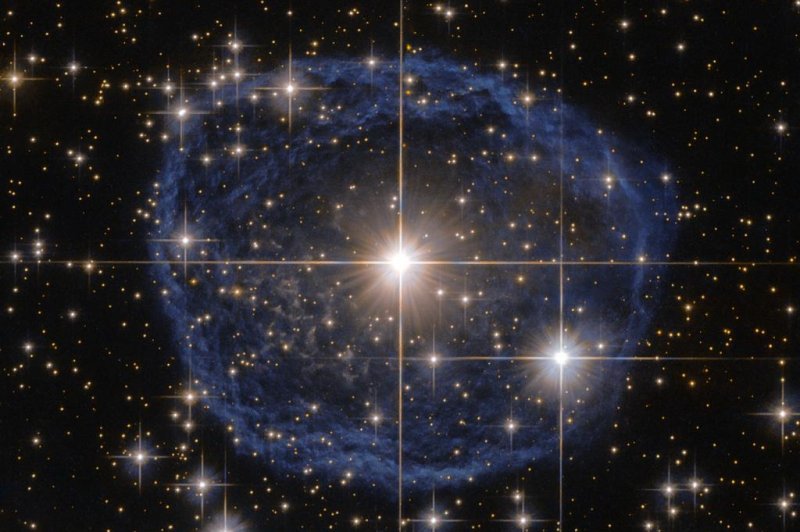WASHINGTON, Feb. 29 (UPI) -- A new image captured by the Hubble Space Telescope features a rare Wolf-Rayet star.
The star, known as WR 31a, is part of the Carina constellation and lies some 30,000 light-years from Earth. WR 31a appears surrounded by a blue bubble -- an interstellar cloud composed of gas and dust.















